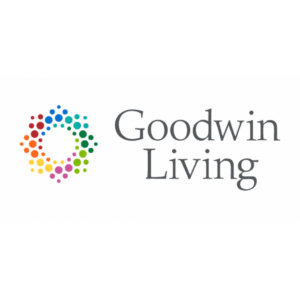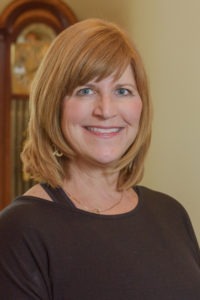Dance fever!
You know that feeling. You catch a snippet of that special song in your life. Perhaps it was from a high school dance, perhaps from a cookout with college friends or even from a wedding or family event. The music immediately transports you back to that day. You can remember where you were, and who you were with. You can almost smell the hot dogs cooking on the grill, the scent of sunscreen or even the stale beer aroma of a favorite college hangout.
The song continues—your head starts to nod, your toes begin to tap. Before you know it, you’re out of your chair, hands waving in the air, feet stomping on the ground and you’re singing along to every word. You’re smiling, even laughing while you bellow the well-known lyrics and turn and twist your whole body to the beat. Legs, arms, hips, ribs, shoulders, feet, hands and head are engaged as you bop and groove around your kitchen. After the song ends, your heart rate is elevated, and your arms and legs feel loose and relaxed. The mental image of that perfect day slowly begins to fade, but your smile remains. You feel strangely energized, excited and happy.
Beyond creative expression
The therapeutic benefits of dancing were first recognized in the 1940s at St.  Elizabeth’s Hospital in Washington, D.C. Marian Chace pioneered a program called “Dance for Communication” to assist World War II veterans in coping with trauma, particularly psychiatric patients who had been unable to express their feelings using traditional methods of communication.
Elizabeth’s Hospital in Washington, D.C. Marian Chace pioneered a program called “Dance for Communication” to assist World War II veterans in coping with trauma, particularly psychiatric patients who had been unable to express their feelings using traditional methods of communication.
Twenty years later, Chace and others went on to found the American Dance Therapy Association. Today, dance/movement therapy is used across a wide range of demographics to help treat both psychological and physical conditions.1
AARP, the Alzheimer’s Association and the British Heart Foundation are a few of the organizations that strongly support and recommend the participation of senior adults in dance programs. Many studies have proved that dance programs can alleviate symptoms of certain conditions, and maybe even cure some illness altogether and certainly assist in fall prevention,2 and the connection between dancing and improved cognitive function continues to be researched extensively.3
The dynamics of dance
At Westminster Towers, a continuing care retirement community in Rock Hill, S.C., independent living residents meet in a twice weekly dance class, “Dance Fever,” named after Peggy Lee’s classic “Fever,” the group’s self-chosen theme song. Each class meets for 30-45 minutes and involves almost continuous teaching, learning and dancing with very little rest time. Dancers range in age from 72 to 104 and most have had no formal dance training. Several began dancing for the first time when this group began six years ago. The group volunteers to travel and perform at churches, other senior living communities and other events around the area. The group is greeted enthusiastically, especially when the audience discovers that more than half the participants are at least 90 years old.
During class, the dancers stand facing the instructor (some with assistive devices). Each dance is carefully choreographed to avoid sudden changes in directions, turning, spinning or steps that require standing on one foot for any length of time. Participant abilities vary greatly—some are completely independent, others have recovered from strokes and broken bones, others are vision or hearing impaired or have some cognitive deficit. Many group members have used the Dance Fever program as an informal part of therapy following an injury or illness, and have danced while seated in a chair or wheelchair until strong enough to stand again.
Dancing can be magical and transforming. It can breathe new life into a tired soul; make a spirit soar; unleash locked-away creativity; unite generations and cultures; inspire new romances or rekindle old ones; trigger long-forgotten memories; and turn sadness into joy, if only during the dance.” —Author unknown |
Individual participants have been successful in lowering blood pressure, reducing daily medications, decreasing symptoms of depression and noticeably improving balance through continued involvement in the dance class. Muscle memory results in those with dementia being able to “remember” dance steps that would otherwise not be possible.
Participants feel a great sense of belonging and being part of something greater than themselves by bringing joy to others through their dancing. Even those who are more introverted cannot help but stomp, yell, sing and demonstrate their joy while they shake, twist and move.
The group is currently rehearsing three dances to be performed as part of Snoozing Beauty, a tongue-in-cheek version of Sleeping Beauty, featuring an all-senior cast of actors, musicians and dancers. This month’s favorite dance is done to Taylor Swift’s “Shake It Off.” They shimmy, shake and smile and look wonderful. Dance Fever is an inclusive group where all are welcome, the physical activity is safe and structured with clear goals, and the exercise does not feel like exercise.
Start dancing
Building a dance program or hosting regular dances is inexpensive and requires little or no equipment. All that is needed is a space to gather, enjoyable music and a place for them to sit and rest their legs between dances. Dancing is also a less intimidating form of exercise than Tai Chi or cardio class. Most older adults will remember positive experiences of dancing in their younger days.4,5 Dancing builds a bridge between communities, cultures and generations and has a plethora of physical and psychosocial benefits for individuals of all ages.
Remember that feeling after you’d danced around your kitchen to that song? Try creating similar experiences for the senior adults in your life and watch them become more engaged, more confident, healthier and happier.
 Amy Laughlin, AP-BC, ADC, CDP, is Director of Life Enrichment at Westminster Towers, a continuing care retirement center in Rock Hill, S.C., and a board member for the South Carolina Activity Professionals Association. She is nationally credentialed through NAAPCC and NCCAP and was the 2014 South Carolina Activity Professional of the Year.
Amy Laughlin, AP-BC, ADC, CDP, is Director of Life Enrichment at Westminster Towers, a continuing care retirement center in Rock Hill, S.C., and a board member for the South Carolina Activity Professionals Association. She is nationally credentialed through NAAPCC and NCCAP and was the 2014 South Carolina Activity Professional of the Year.
References
- Ianzito C. The Healing Powers of Dance. Available at: aarp.org/health/fitness/info-03-2011/dance-for-health.html
- Alves H. Dancing and the Aging Brain: The effects of a 4-month ballroom dance intervention on the cognition of healthy adults, 2013. Available at: ideals.illinois.edu/bitstream/handle/…/Heloisa_Alves.pdf?…1
- Krampe J, Rantz MJ, Dowell L, et al. (2010) Dance-based therapy in a program of all-inclusive care for the elderly: an integrative approach to decrease fall risk. Nursing Administration Quarterly 2010;34(2):156-61.
- Dunlap J, Barry HC. (1999). Overcoming exercise barriers in older adults. The Physician and Sportsmedicine 1999; 27(11):69–75.
- Lima M, Vieira A. Ballroom dance as therapy for the elderly in Brazil. American Journal of Dance Therapy 2007;29(2): 129–42.
- Keogh, Kilding, Pidgeon, Ashley & Gillis (2009) Physical Benefits of Dancing for Healthy Older Adults: A Review, Journal of Aging and Physical Activity 2009:17:1-23.
I Advance Senior Care is the industry-leading source for practical, in-depth, business-building, and resident care information for owners, executives, administrators, and directors of nursing at assisted living communities, skilled nursing facilities, post-acute facilities, and continuing care retirement communities. The I Advance Senior Care editorial team and industry experts provide market analysis, strategic direction, policy commentary, clinical best-practices, business management, and technology breakthroughs.
I Advance Senior Care is part of the Institute for the Advancement of Senior Care and published by Plain-English Health Care.
Related Articles
Topics: Activities , Articles











